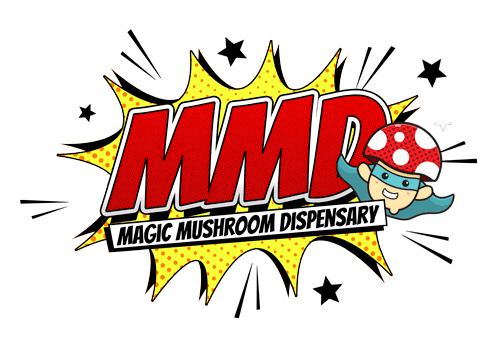Uncategorized
Combining two powerful cannabis plants: benefits and risks
Cannabis has long been a topic of fascination, research, and controversy. It’s a plant that holds within it a complex web of compounds and properties, with various strains carrying unique characteristics. The combination of two powerful cannabis strains is an intriguing prospect, often driven by the desire to maximize therapeutic effects, minimize adverse outcomes, or explore the nuances of this ancient herb. In this comprehensive guide, we explain the effects of combining two potent cannabis strains, the potential medical benefits, the associated risks, and the current state of scientific understanding.
Understanding Cannabinoids: The Foundation of Cannabis’s Effects
To comprehend the intricacies of combining cannabis strains, it is essential to first grasp the role of cannabinoids, which are the bioactive compounds found in the plant. The most well-known of these is delta-9-tetrahydrocannabinol (THC), responsible for the plant’s psychoactive effects.
THC binds to the endocannabinoid receptors in the brain and central nervous system, triggering the sensation of being high. Cannabidiol (CBD), another major cannabinoid, has garnered significant attention for its non-psychoactive properties and potential medicinal applications. CBD does not produce the euphoric high associated with THC but offers a range of effects, including analgesic, anti-inflammatory, and anxiolytic properties.
Combining Cannabis Strains: A Complex Endeavor
The act of combining two cannabis strains is no simple task. The choice of strains depends on various factors, including their cannabinoid profile, terpenes, and intended effects. Some strains are rich in THC, while others are CBD-dominant. A fusion of two such strains can lead to a myriad of effects, often unpredictable and dependent on the specific ratios used.
One common reason for combining strains is to harness the synergistic effects of multiple cannabinoids. This approach is known as the “entourage effect”, where the different compounds in cannabis work together to produce a more profound effect than any one of them alone. The idea is that combining strains can provide a broader spectrum of therapeutic benefits.
The Potential Medical Benefits of Combining Cannabis Strains
A significant body of research suggests that combining two powerful cannabis strains may hold the key to unlocking a wide array of medical benefits. Here are some of the most studied effects of mixing strains:
- Pain Relief: Chronic pain is a widespread condition, and cannabis has been explored for its analgesic effects. A combination of strains rich in both THC and CBD could provide potent pain relief without the intense psychoactive effects of high-THC strains. Studies have shown that the combination of these cannabinoids may be more effective in managing neuropathic pain than either compound alone.
- Cancer Treatment: The antitumor effects of cannabinoids have been the focus of extensive research. Combining strains with high levels of CBD and specific terpenes may have potential in the treatment of chemotherapy-induced nausea and vomiting. Additionally, some studies have suggested that cannabis could have direct antitumor effects in certain types of cancer.
- Mental Health Disorders: The potential of cannabis in the treatment of mental health disorders is an area of growing interest. Combining strains with anxiolytic properties, such as high-CBD and certain terpenes, may be helpful in managing conditions like anxiety and bipolar disorder. However, the effects can vary significantly from person to person, making it a complex treatment option. Plus, there is little knowledge of its effects after long-term use.
- Substance Use Disorders: While cannabis is often used as a substitute for more harmful substances, it is not without its own potential for misuse. Combining strains that are lower in THC and have a balanced CBD-THC ratio might reduce the risk of developing substance use disorders.
Understanding the Risks and Adverse Effects
Although combining two powerful cannabis strains may offer promising medical benefits, it is essential to acknowledge the associated potential risks and adverse effects:
- Psychological Effects: Combining strains with high levels of THC can lead to strong psychoactive effects, potentially causing anxiety, paranoia, and cognitive impairment in some individuals.
- Cannabinoid Hyperemesis Syndrome: This is a condition characterized by recurrent vomiting, often associated with long-term cannabis use. Combining strains may not necessarily reduce the risk of this syndrome, and it can still be a concern for some users.
- Respiratory Risks: Combining strains by smoking can expose users to the respiratory risks associated with cannabis smoking, such as lung irritation and an increased risk of lung cancer.
- Association with Mental Health Disorders: Although often used to treat mental health issues, cannabis use, especially high-THC strains, has also been linked to an increased risk of developing or exacerbating mental health disorders, such as schizophrenia. Combining strains should be done with caution, especially in individuals with a history of such disorders.
Current Research Landscape
As the interest in cannabis’s medical applications continues to grow, researchers have undertaken systematic reviews, critical reviews, and both animal studies and human studies to better understand the potential of combining strains. These studies provide invaluable insights into the effectiveness and safety of this approach.
For instance, observational studies and meta-analyses have been conducted to assess the effectiveness of cannabis for various medical purposes. These reviews compile data from multiple clinical studies to provide a more comprehensive overview of the available evidence. The results of these reviews can inform healthcare providers and patients about the potential benefits and harmful effects of using cannabis.
Human studies are essential in determining the actual impact of combining cannabis extracts and strains on various conditions. These studies often involve patients with specific medical conditions. They can provide more direct insights into the effect of cannabinoids and terpenes on health outcomes. However, they also come with their own limitations, such as the potential for biases and the challenges of conducting controlled experiments with a substance that is not federally legal in many places.
Animal models have also been instrumental in shedding light on the potential therapeutic properties of cannabis and its compounds. These models allow for controlled experiments and can provide preliminary data to guide human studies. However, translating findings from animals to humans is a complex process, and results may not always be directly applicable.
The Need for FDA-Approved Cannabinoids
While cannabis has shown promise in various medical applications, the lack of standardized, FDA-approved cannabinoids and dosages remains a significant challenge. The absence of consistent, regulated products hinders both research and the effective treatment of patients. With the increasing legalization of cannabis for medical and recreational use, there is a growing need for standardized, pharmaceutical-grade cannabis-based medications.
Common ground: magic mushrooms and cannabis
Popular Cannabis Strain Combinations
Although there is still much research to be done on mixing cannabis strains before it can pass the legal boundaries, many recreational users have been mixing cannabis strains for years in order to achieve specific effects of cannabinoids. Below, we break down some tried and tested combinations that cannabis enthusiasts swear by!
Blue Dream (Sativa-dominant) + Girl Scout Cookies (Hybrid)
This combination can offer a balanced experience, with the energetic and uplifting qualities of Blue Dream complementing the relaxing and euphoric effects of Girl Scout Cookies. Users often report increased creativity, focus, and a sense of well-being.
OG Kush (Indica) + Sour Diesel (Sativa)
Combining the relaxation and body-heavy effects of OG Kush with the invigorating and cerebral effects of Sour Diesel creates a balanced, hybrid-like experience. Users may experience a sense of euphoria, pain relief, and an uplifted mood.
Bubba Kush (Indica) + Death Star (Indica)
Combining Bubba Kush and Death Star, both Indica-dominant strains, leads to deep relaxation and pronounced sedation, making it an ideal choice for evening use and promoting a contented, stress-free state of mind. The synergistic effects of these strains are likely to induce a strong body high and a profound sense of calm.
Granddaddy Purple (Indica) + Jack Herer (Sativa)
This combination offers the best of both worlds: the body relaxation and sedation of Granddaddy Purple, coupled with the mental stimulation and creativity of Jack Herer. It’s a good choice for those seeking a relaxed, but not overly sedating, experience.
Lemon Skunk (Hybrid) + Super Silver Haze (Sativa)
Combining Lemon Skunk, known for its uplifting and citrusy aroma, with Super Silver Haze, a potent sativa strain, results in an energetic and mood-boosting experience. Users can expect increased focus, creativity, and a burst of euphoria, making this combination ideal for daytime use and social activities.
It’s important to note that the effects of cannabis strains can vary from person to person, and other factors such as dosage, tolerance, and individual physiology play a significant role in determining the overall experience. It’s always advisable to start with a low dose, especially if you are new to cannabis, and to seek the advice of a healthcare provider when using cannabis for medical purposes.
Buy Cannabis Online
If you’re intrigued by the thought of mixing cannabis strains and want to give it a try, Magic Mushroom Dispensary offers a diverse range of high-quality cannabis products to meet your needs. Our selection includes a variety of strains, including indicas, sativas, and hybrids, known for their unique effects. Alternatively, if you are looking to diversify your experience, we also stock a wide range of psychedelics, including magic Mushrooms and DMT. Whatever you are looking for, we can guarantee high quality and discreet delivery.
Frequently Asked Questions
Choosing the right strains depends on your desired effects and individual preferences. Consider the cannabinoid content (THC, CBD, etc.), terpene profiles, and your tolerance. Consulting with a budtender or healthcare provider can be helpful.
Yes, there are potential risks, including experiencing adverse effects, overconsumption, and unwanted interactions between strains. It’s crucial to start with small doses and be aware of your tolerance levels.
Combining strains may be beneficial for certain medical conditions, such as chronic pain, anxiety, or insomnia. Research is ongoing so consulting with a healthcare provider is essential to determine suitability.

